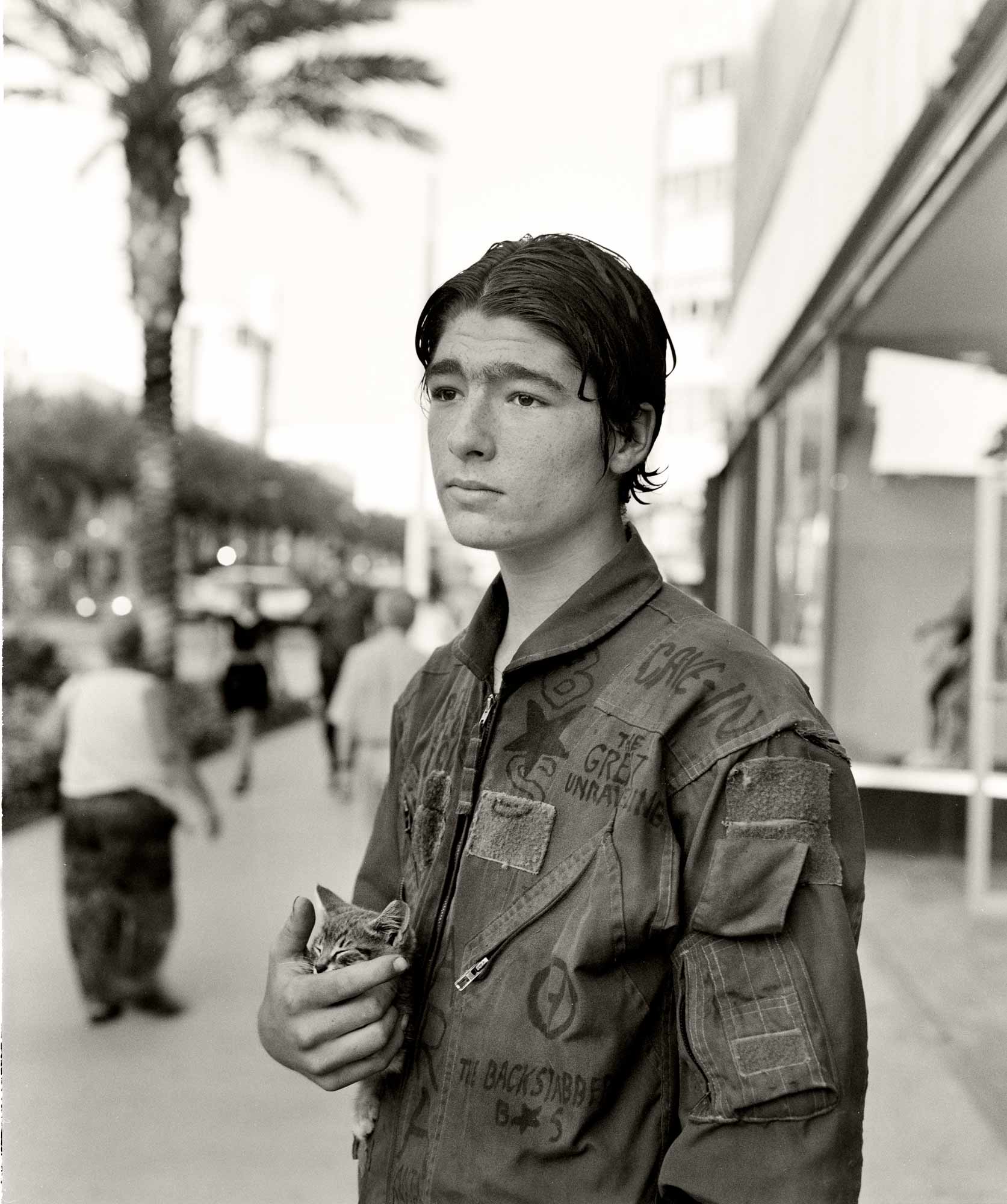Miami Beach, captured in its hedonistic heyday
- Text by Niall Flynn
- Photography by Barry Lewis

Between 1988 and 1995, British photographer Barry Lewis was a regular fixture at Miami Beach, documenting the coastal strip as it bounced back to life following a lengthy hangover.
The two decades prior had seen it beset with violence, as drug cartels clashed with US authorities (and each other) in a series of armed conflicts. On top of that, racial tensions were simmering in the city, while an increasingly ageing population also played a role in Miami’s transition from post-war party town to a place that was generally considered unattractive.
But towards the end of the ’80s, the narrative began to change. Miami had been home to a gay nightlife scene from as the early as the 1930s, but a fresh influx of arrivals from the LGBT community helped halt an elongated period of social and economic decline. As its cultural scene became exciting once more, others followed, resulting in fresh development in the city.
 “It was cheap to live there, always warm, the beaches were safe, drugs were plentiful, and there were cheap flights from the Caribbean and New York down to Miami,” Lewis remembers. “It became the party town of America – again!”
“It was cheap to live there, always warm, the beaches were safe, drugs were plentiful, and there were cheap flights from the Caribbean and New York down to Miami,” Lewis remembers. “It became the party town of America – again!”
The beach, with its eclectic cast of animated characters, became emblematic of its resurgence. For Lewin – who first arrived in the city in 1987, immediately struck by its ragged charm – it was the perfect place to be, and the perfect time to be there.
 “It was a more relaxed style of picture-taking than my usual rapid framing approach – here I could take my time and engage with people,” he says, recalling the time he spent capturing body builders, drag queens, surfers and club kids as they went about their business in the sun.
“It was a more relaxed style of picture-taking than my usual rapid framing approach – here I could take my time and engage with people,” he says, recalling the time he spent capturing body builders, drag queens, surfers and club kids as they went about their business in the sun.
“And the photography became so much more than the pictures. It became about meeting an extraordinary range of people who all talked about their lives with as much colour as the buildings around them.”
 Today, those images come together to form Miami Beach 1988 – 1995, a book published by Hoxton Mini Press. Shot in black and white – a striking contrast to the colourful environment – Lewis’ photographs capture a place in its hedonistic heyday.
Today, those images come together to form Miami Beach 1988 – 1995, a book published by Hoxton Mini Press. Shot in black and white – a striking contrast to the colourful environment – Lewis’ photographs capture a place in its hedonistic heyday.
“Maybe it was the heat, maybe it was the atmosphere of people relaxing together, but everyone was willing to be photographed. Everyone had their story. There was an acceptance and openness to strangers. We were, perhaps, all strangers there.”




 Miami Beach 1988-1995 is available now from Hoxton Mini Press.
Miami Beach 1988-1995 is available now from Hoxton Mini Press.
Enjoyed this article? Like Huck on Facebook or follow us on Twitter.
Latest on Huck

The inner-city riding club serving Newcastle’s youth
Stepney Western — Harry Lawson’s new experimental documentary sets up a Western film in the English North East, by focusing on a stables that also functions as a charity for disadvantaged young people.
Written by: Isaac Muk

The British intimacy of ‘the afters’
Not Going Home — In 1998, photographer Mischa Haller travelled to nightclubs just as their doors were shutting and dancers streamed out onto the streets, capturing the country’s partying youth in the early morning haze.
Written by: Ella Glossop

See winners of the World Press Photo Contest 2025
A view from the frontlines — There are 42 winning photographers this year, selected from 59,320 entries.
Written by: Zahra Onsori

Inside Kashmir’s growing youth tattoo movement
Catharsis in ink — Despite being forbidden under Islam, a wave of tattoo shops are springing up in India-administered Kashmir. Saqib Mugloo spoke to those on both ends of the needle.
Written by: Saqib Mugloo

The forgotten women’s football film banned in Brazil
Onda Nova — With cross-dressing footballers, lesbian sex and the dawn of women’s football, the cult movie was first released in 1983, before being censored by the country’s military dictatorship. Now restored and re-released, it’s being shown in London at this year’s BFI Flare film festival.
Written by: Jake Hall

In the dressing room with the 20th century’s greatest musicians
Backstage 1977-2000 — As a photographer for NME, David Corio spent two decades lounging behind the scenes with the world’s biggest music stars. A new photobook revisits his archive of candid portraits.
Written by: Miss Rosen